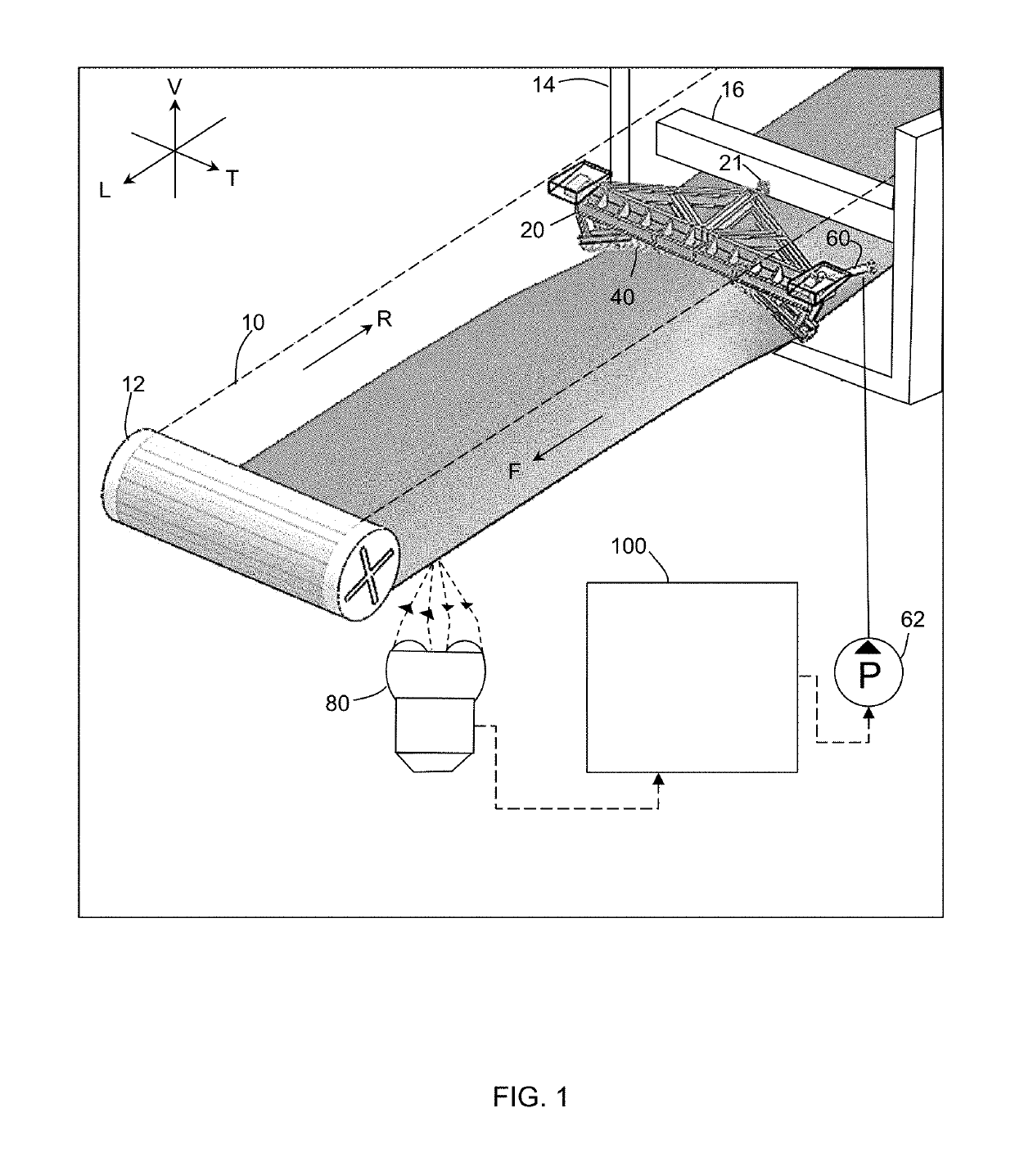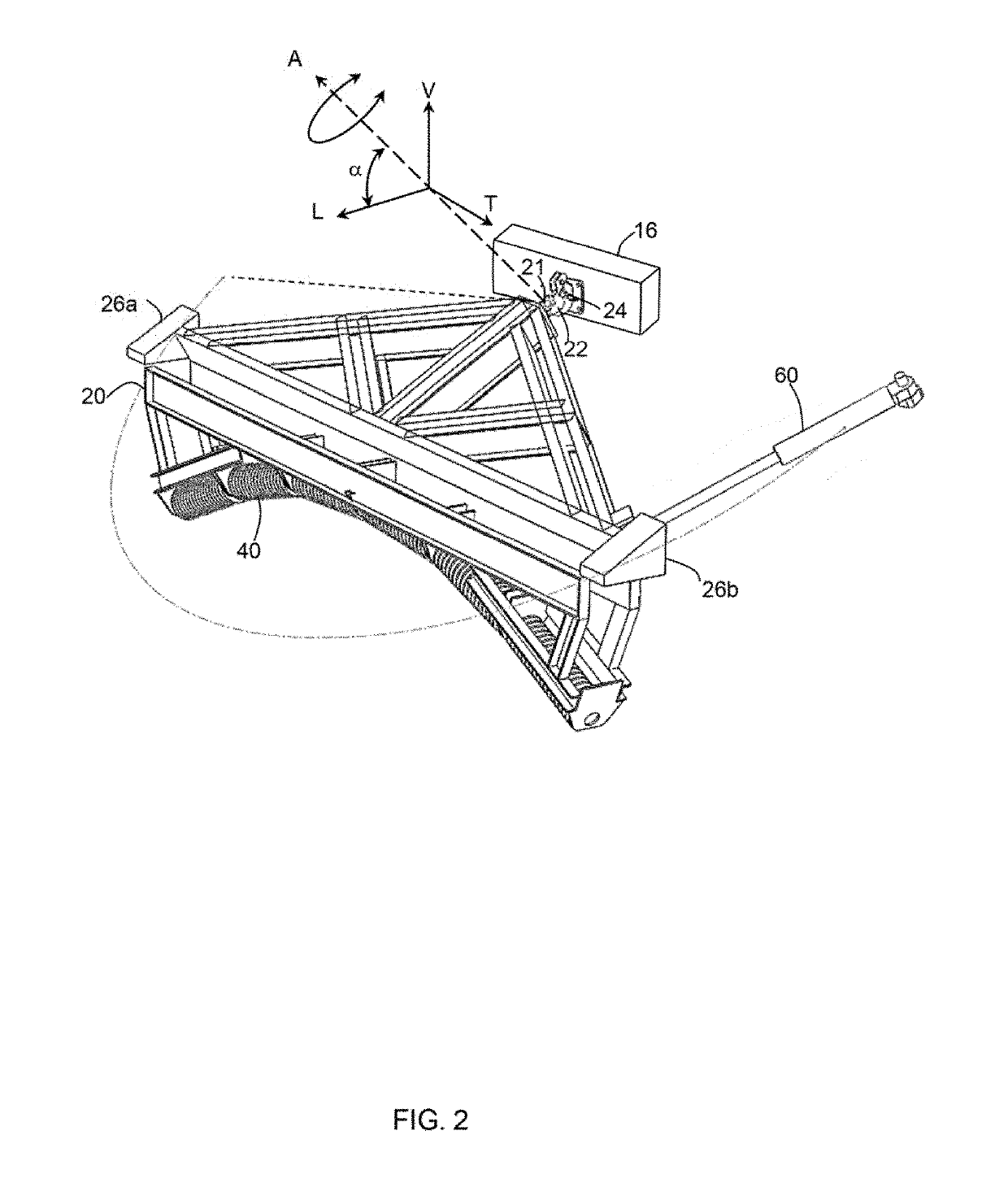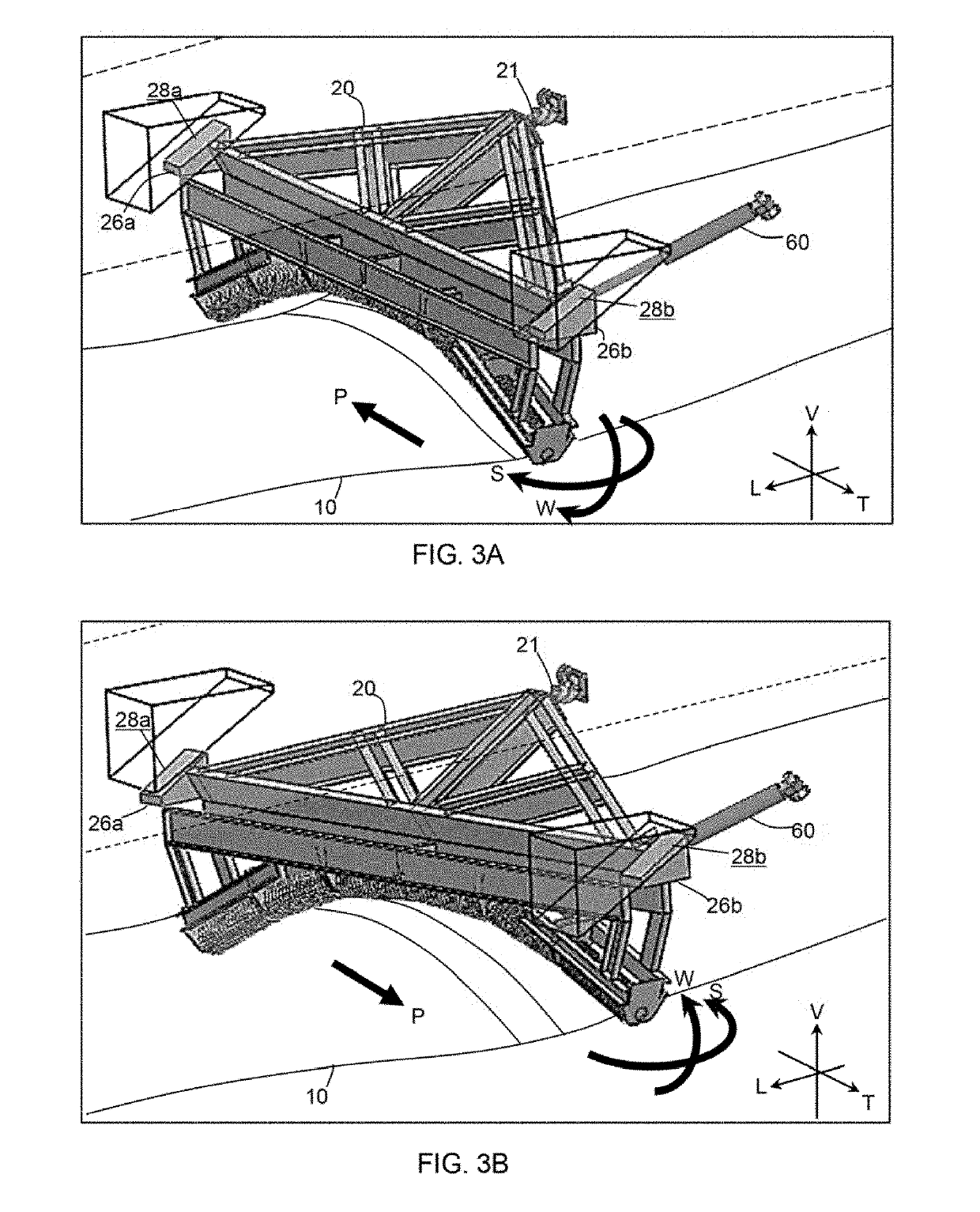System and method for correcting conveyor belt misalignment
a technology of conveyor belt and system components, applied in the direction of conveyor parts, rollers, transportation and packaging, etc., can solve the problems of poor quality of conveyor belt splices, poor quality of conveyor belts, and so as to improve the effectiveness of correcting the misalignment of conveyor belts
- Summary
- Abstract
- Description
- Claims
- Application Information
AI Technical Summary
Benefits of technology
Problems solved by technology
Method used
Image
Examples
first embodiment
[0031]First embodiment. FIGS. 1 to 4B show a system of the present invention, together with a conveyor belt installation. For convenient description, FIG. 1 shows three mutually orthogonal references axes corresponding to a horizontal longitudinal direction (L), a horizontal transverse direction (T), and a vertical direction (V). These directions are used only to refer to relative spatial relationships between parts of the system. As such, the horizontal directions (L) and (T) may not be exactly horizontal, and the vertical direction (V) may not be exactly vertical in implementation of the invention.
[0032]Referring to FIG. 1, the conveyor belt installation by itself is conventional, and includes a conveyor belt (10) supported and driven by an end pulley (12) relative to a support frame (14). In an exemplary use, the conveyor belt installation is used for transporting mined oil sands ore, but the system is not limited to any particular use. The forward run of the conveyor belt (10) (...
second embodiment
[0051]Second embodiment. FIGS. 5 to 9 show a second embodiment of the apparatus of the present invention, in isolation from the conveyor belt installation. the system is similar to the first embodiment of the system shown in FIGS. 1 to 4B, with like elements being labelled with like reference characters. Accordingly, the following description focuses on certain differences of the second embodiment and its use and operation, as compared with the first embodiment.
[0052]In this second embodiment, the bearing members (26a, 26b) of the frame (20) do not directly engage the guide surfaces (28a, 28b). Rather, a rolling element a ball transfer unit (35a, 35b) is attached to each of the bearing members (26a, 26b). As shown in one embodiment in FIG. 8, the ball transfer unit (35a, 35b) includes a housing that contains a ball supported by bearings (concealed from view in the housing) that allow the ball to rotate relative to the housing in multiple directions, while transmitting load. Such bal...
third embodiment
[0057]Third embodiment. FIGS. 10 and 11 show a third embodiment of the apparatus of the present invention, in isolation from the conveyor belt installation. the system is similar to the first and second embodiments of the system, with like elements being labelled with like reference characters.
[0058]FIG. 10 shows the frame (20) pivoting from a neutral position (A) to a non-neutral position (B). (In FIG. 10, the neutral position (A) and the non-neutral position (B) are superimposed on each other for illustrative effect.) In the neutral position, the rolling contact surface provided by the idler rollers (40) is disposed symmetrically in relation to a properly aligned conveyor belt, so that the transverse pushing effect (P), the torsional steering effect (S) and the torsional tiling effect (W) are substantially nil. FIG. 11 shows a detailed view of the region of the apparatus near the pivot point, when the frame (20) pivots from the neutral position to the non-neutral position. (In FIG...
PUM
 Login to View More
Login to View More Abstract
Description
Claims
Application Information
 Login to View More
Login to View More - R&D
- Intellectual Property
- Life Sciences
- Materials
- Tech Scout
- Unparalleled Data Quality
- Higher Quality Content
- 60% Fewer Hallucinations
Browse by: Latest US Patents, China's latest patents, Technical Efficacy Thesaurus, Application Domain, Technology Topic, Popular Technical Reports.
© 2025 PatSnap. All rights reserved.Legal|Privacy policy|Modern Slavery Act Transparency Statement|Sitemap|About US| Contact US: help@patsnap.com



